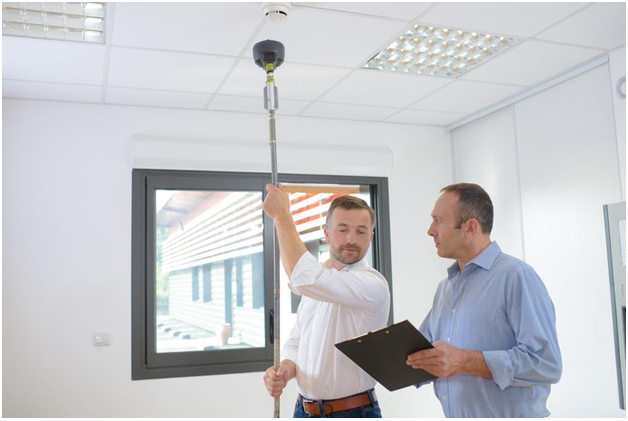Emergencies come in different shapes and sizes and often strike without warning. Simple measures that ensure public safety are vital to protect people who venture out to places of work, schools, gyms, and any other public spaces. Buildings are responsible for obtaining the resources needed to navigate emergencies successfully.
Webinars: These Digital Meetings That Fight Against Inactivity During Covid-19
Unforeseen situations can be either natural or caused by people or groups. Types of emergencies include but are not limited to floods, tornados, hurricanes, fires, toxic gas releases, chemical spills, explosions, civil disturbances, and much more. Depending on the type of issue that arises, public spaces must have the equipment and planning needed to be prepared to extinguish fires, evacuate, treat injured, ill or wounded patrons, or shelter in place.
Planning for an emergency before it occurs is the best way to face the many challenges that often come along with it. Creating a crisis management plan that outlines equipment testing, fire, life, and safety drills, and inspections is the first step in preparing for unexpected situations.
Creating an Emergency Response Plan
An effective action plan specifically entails what property staff and management should and can do in the event of an emergency. This includes delegating duties to team members and outlining specific responsibilities that should be adhered to during various crises. Every emergency action plan should be customized to your space and include the following at the very least:
- A map of your space that clearly marks areas of refuge, fire extinguishers, first-aid, and exits.
- Evacuation procedures and alternate emergency escape routes.
- Emergency contact information.
- Shut down procedures for elevators, machinery, and all mechanical elements on the property.
- Designated assembly spaces for evacuees.
- Communication and emergency alert methods and protocols.
- Inspection logs and schedules of emergency equipment.
Inspections, Maintenance, and Testing
After formulating an emergency response plan, testing the program and inspecting all necessary equipment is the next step. Listed below are only a few critical starting points that are some of the most essential parts of an emergency response plan.
Fire alarms should be tested regularly. Some of the main fail points that often happen with commercial fire alarm systems are drained batteries, faulty sensors, false alarms, and sensory (horn or strobe) failures. All battery functions should be tested, including back-ups, by using specialized battery load testers. Batteries that perform at only a 50%-70% capacity are at high risk of failure and should be replaced.
Lead-acid batteries that are typically used in fire alarm systems need to be replaced every 3-5 years. Properly labeling, dating, and logging battery upgrades is recommended, and all logs or manuals should be kept in a central area along with the entire emergency response plan.
Fire extinguisher inspection should follow OSHA protocols, procedures, and involve qualified personnel. Fire extinguishers should be mounted in areas that are accessible to occupants and clearly labeled. Only approved fire extinguishers should be used, and carbon tetrachloride or chlorobromomethane extinguishing agents should be avoided.
Emergency preparation teams should inspect pressure gauges, expiration dates, and ensure that hoses have not deteriorated monthly. It’s also essential to examine the extinguisher’s overall condition and make sure that the pull pin is sealed.
Commercial grade Automated External Defibrillators (AED) should be inspected at least once a month if not more often. AED malfunctions are often a result of battery failure, and the cost of negligence could potentially mean loss of life. Emergency response teams must be educated on AED battery and electrode pad care, and inspect equipment regularly. If your AED is stored in a public area, equipment may need to be checked weekly or even daily.
Most AED batteries need to be completely replaced every 2- 5 years even if the machine has not been used. Once your AED has been discharged, it will require a high degree of care before it’s ready to be used again. This could include replacing electrode pads, downloading data, and potentially replacing the battery. Philips HeartStart AEDs are a preferred brand for commercial usage, and their supplemental M5070A batteries are known for their long life.
Commercial powered generators should be inspected quarterly. Emergency response teams should get to know any instruction manuals associated with back-up power supplies to inspect equipment properly.
Components that should be closely monitored are fuel, oil, cooling systems, batteries, and wiring if applicable to your equipment. Operating manuals and logs should be kept in the emergency response planning toolkit, and professional inspections of equipment are also recommended.
Conclusion
Training property management and staff are how building managers can implement action plans and are vital to success. Teams should frequently meet to study, discuss, and revise disaster planning as needed, and specific roles should be delegated.
Successful action plans should contain protocols and also documentation, tools, and resources for further development. Other general considerations in disaster planning should also include infectious disease contingencies and procedures for helping mobility-impaired patrons to evacuate or move to safe places within the building.





































